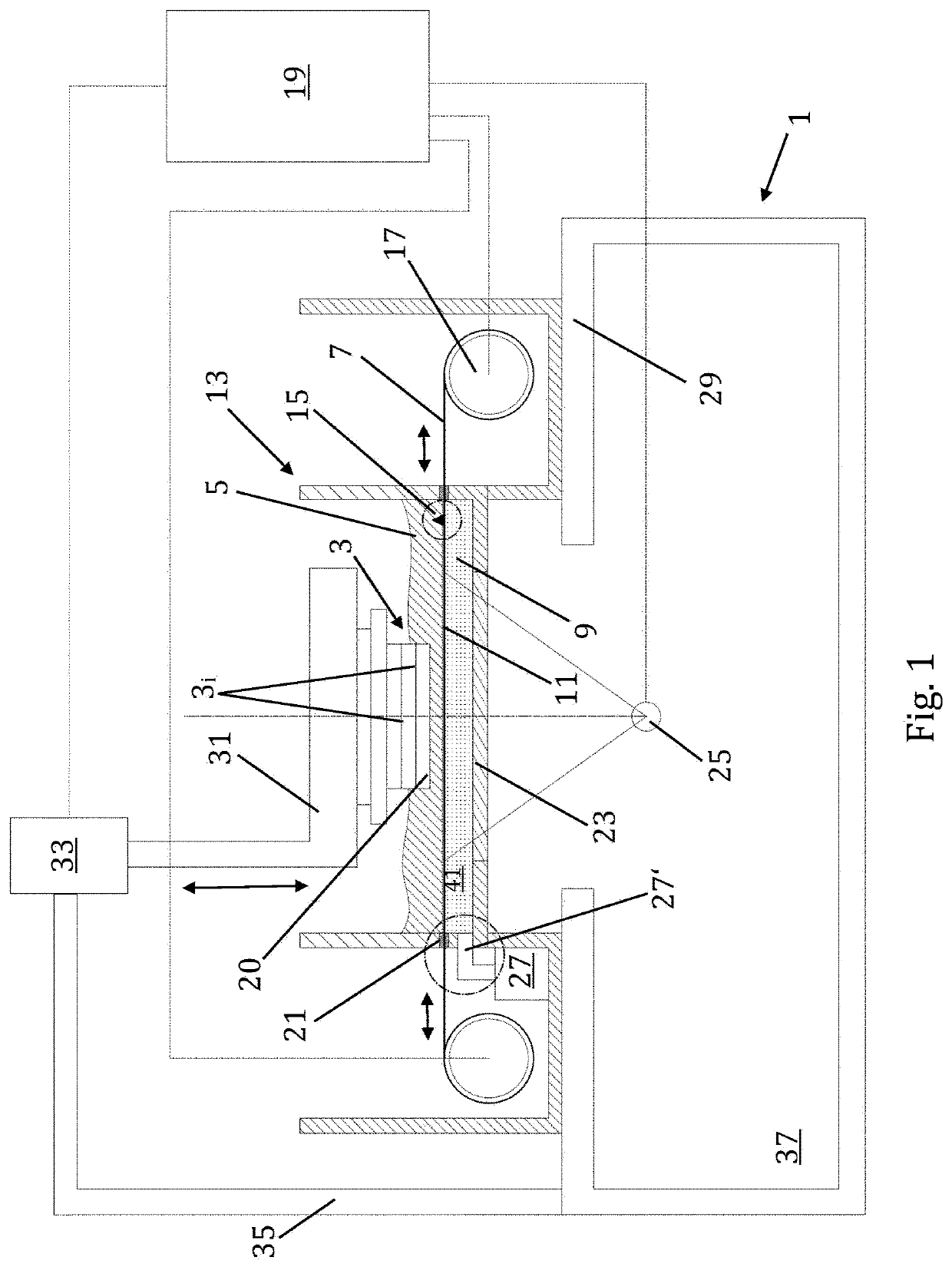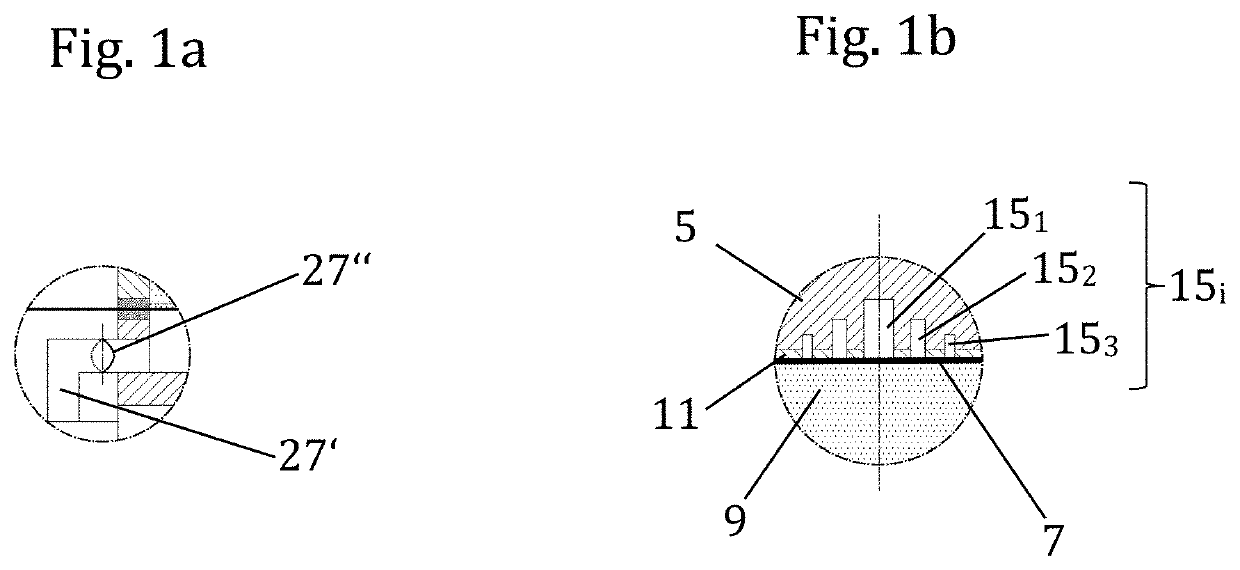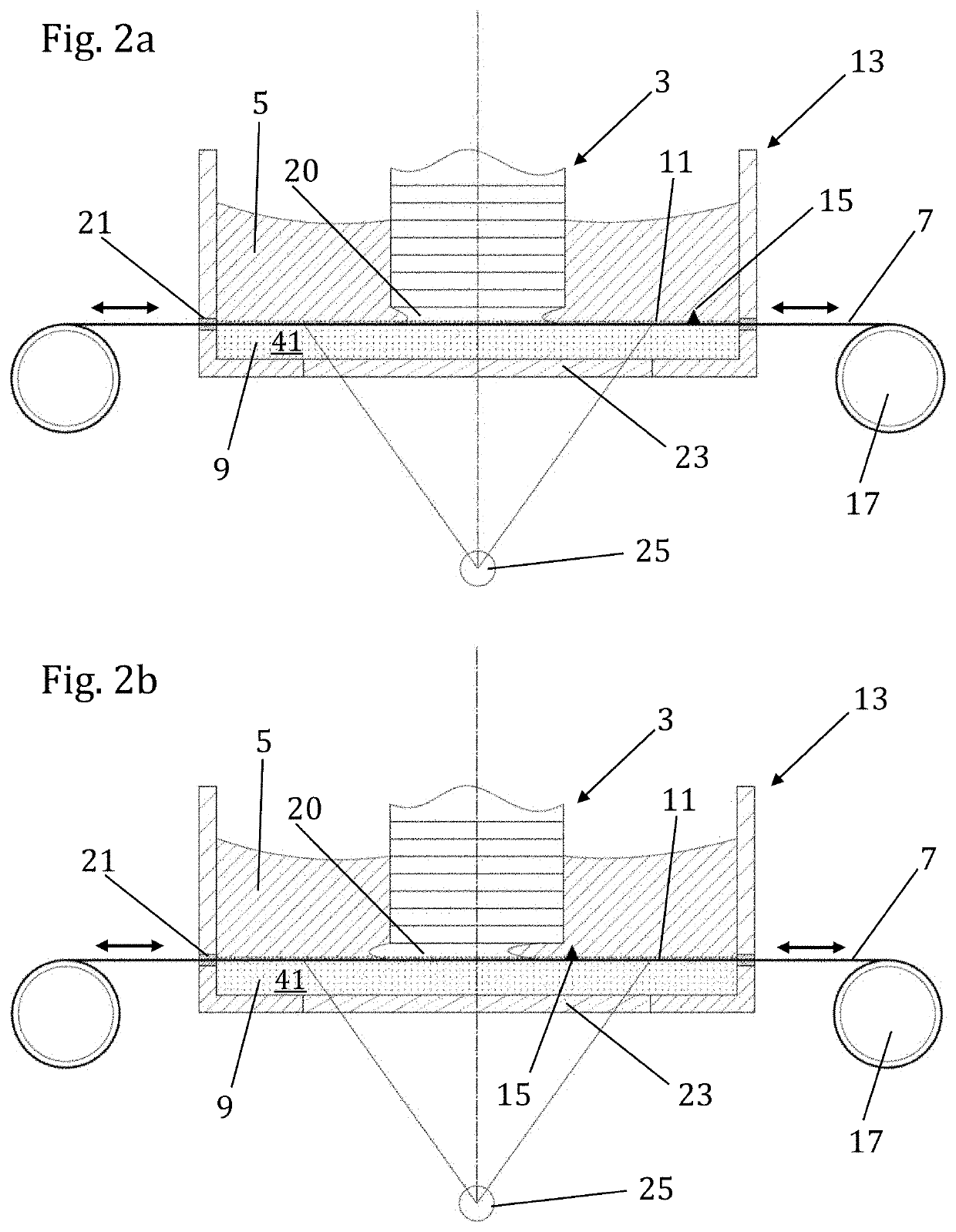System and method for generating a three-dimensional body
- Summary
- Abstract
- Description
- Claims
- Application Information
AI Technical Summary
Benefits of technology
Problems solved by technology
Method used
Image
Examples
Embodiment Construction
[0035]FIG. 1 shows a system 1 for generating, i.e. constructing, a three-dimensional component or body 3 by the so-called “rapid prototyping”. The body 3 can be created of individual layers 3i, wherein i=1, 2, 3 . . . , in a discontinuous or continuous manner from a photoreactive substance 5. The photoreactive substance 5 can be cured by a radiation with light, for instance UV light. In this regard, under the term “light” there is to be understood each kind of electromagnetic radiation which is suitable for curing the respective substance 5. The photoreactive substance 5 is for instance substantially “liquid”, wherein under this term also a paste-like consistency with a random viscosity is understood.
[0036]The photoreactive substance 5 is at least partly in contact with a semipermeable layer or ply 7 which, in turn, is at least partly in contact with a second phase 9. In this connection, under the term “phase” there are understood chemical compounds of any state of aggregation, i.e....
PUM
| Property | Measurement | Unit |
|---|---|---|
| Density | aaaaa | aaaaa |
| Flexibility | aaaaa | aaaaa |
| Shape | aaaaa | aaaaa |
Abstract
Description
Claims
Application Information
 Login to View More
Login to View More - R&D
- Intellectual Property
- Life Sciences
- Materials
- Tech Scout
- Unparalleled Data Quality
- Higher Quality Content
- 60% Fewer Hallucinations
Browse by: Latest US Patents, China's latest patents, Technical Efficacy Thesaurus, Application Domain, Technology Topic, Popular Technical Reports.
© 2025 PatSnap. All rights reserved.Legal|Privacy policy|Modern Slavery Act Transparency Statement|Sitemap|About US| Contact US: help@patsnap.com



